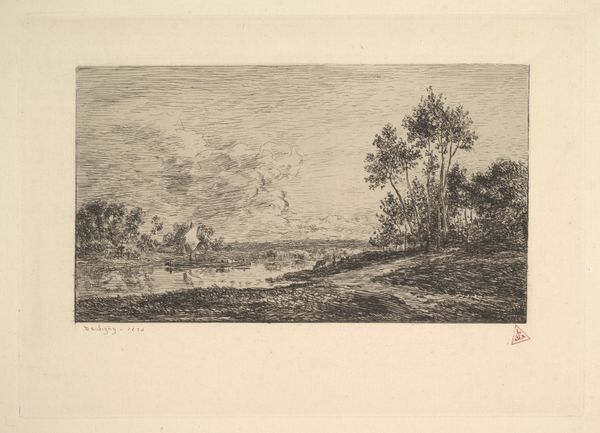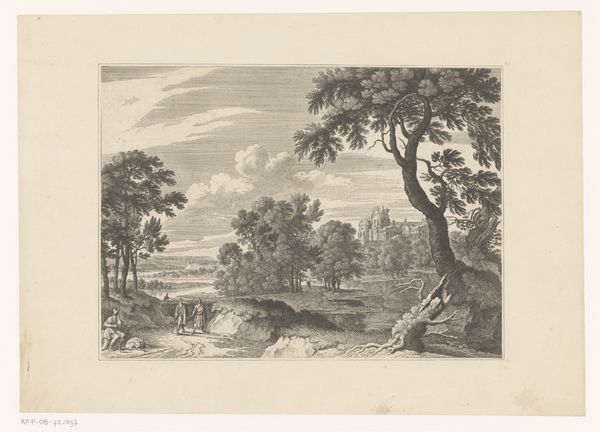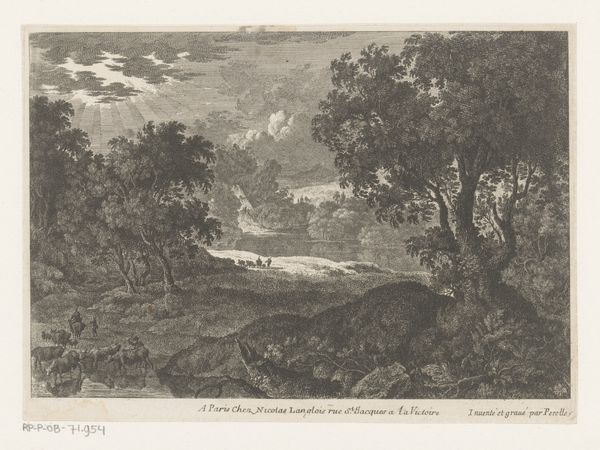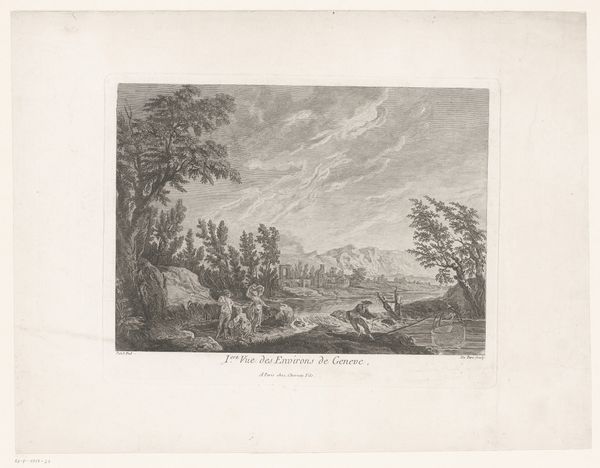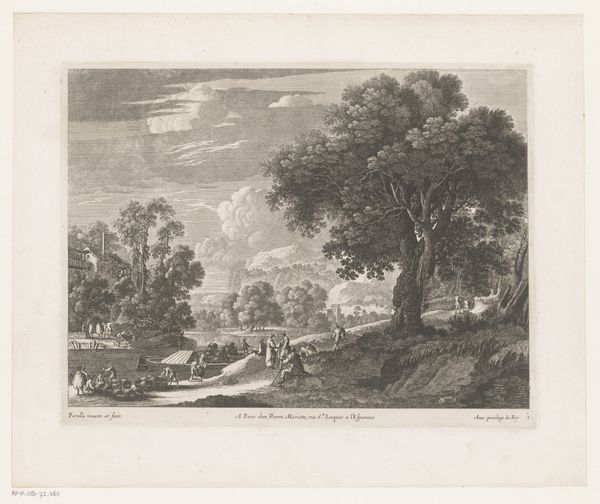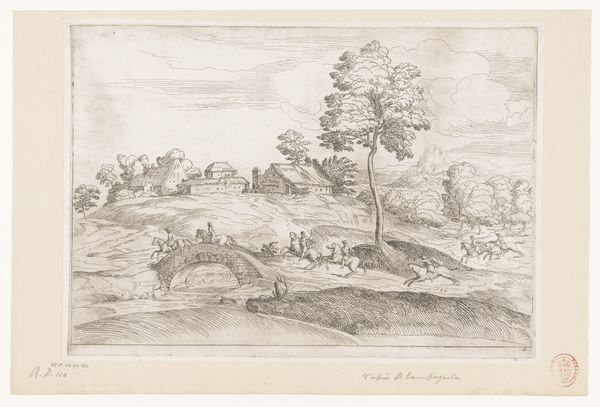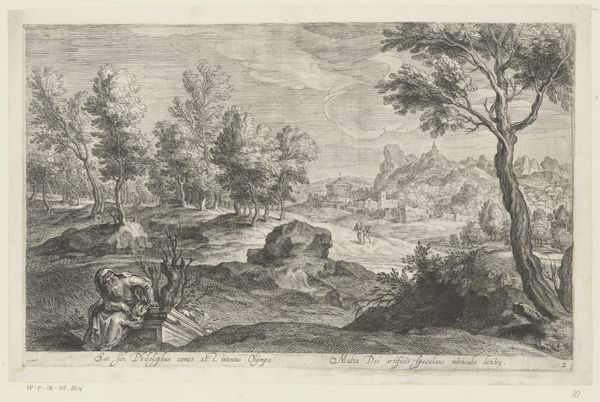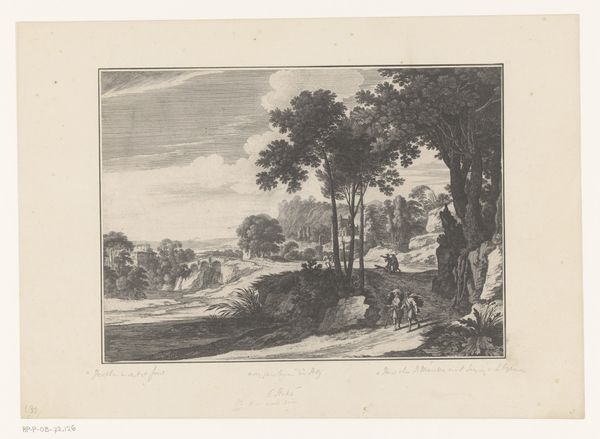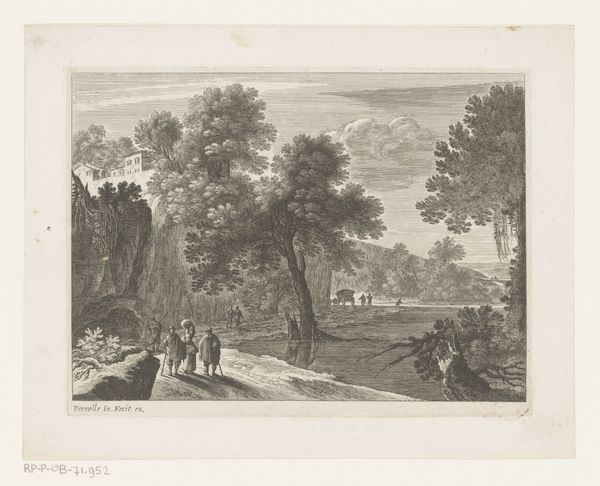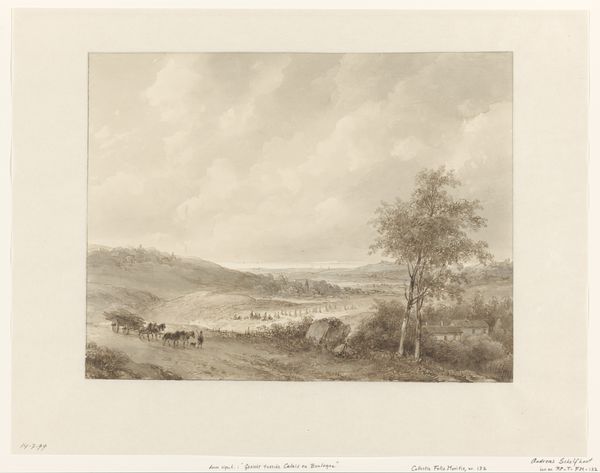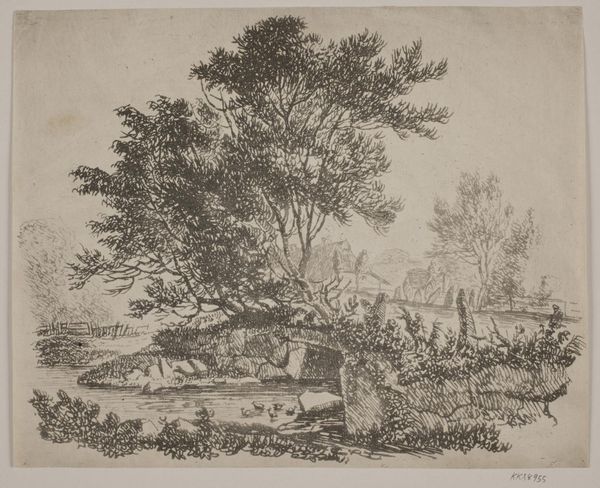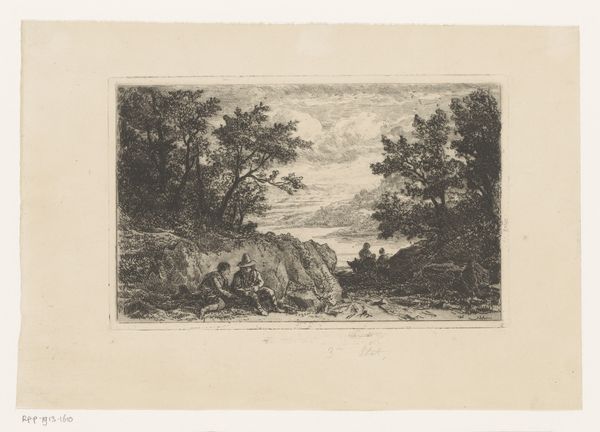
Dimensions: height 355 mm, width 455 mm
Copyright: Rijks Museum: Open Domain
Francesco Bartolozzi created this pastoral scene using etching, a printmaking technique where lines are incised into a metal plate with acid. The resulting print, made from ink transferred from the plate to paper, gives us a glimpse into 18th-century artistic practices. Etching requires a complex process, demanding skill in both drawing and chemistry. Bartolozzi would have carefully applied a resist coating to the metal, drawn through it to expose the metal, and then immersed the plate in acid. The depth of the lines, and thus the darkness of the printed image, depends on the amount of time the plate spends in the acid bath. Multiple rounds of stopping out the plate and etching create tonal variety and depth. Although seemingly worlds away from the Industrial Revolution, images like these provided vital source material for manufacturers of luxury goods, from textiles to ceramics. With its seemingly effortless lines, this print reminds us that all works of art, whether unique or made in multiples, embody the labor of their making. Appreciating this labor helps us to look beyond the traditional hierarchy separating art and craft.
Comments
No comments
Be the first to comment and join the conversation on the ultimate creative platform.

